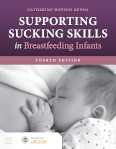If you purchase through these links,
I get a small commission. Thank you!

January 16, 2013
Helping Mom work "Smarter, not Harder"
Mothers who are experiencing breastfeeding difficulties are often 'triple feeding'- feeding at breast, pumping and then bottle feeding, and then cleaning all that equipment. Often the baby stops working very hard at the breast and spends long periods sucking ineffectively, leaving the mother without time to express milk frequently enough to increase her milk production, and the whole thing becomes unsustainable. An appropriately chosen at-breast supplementer can reduce the time spent feeding and improve breast drainage, stimulating increased milk production.
My usual goal is to keep the feed-express-clean cycle down to less than an hour per feeding. Forty minutes is even better, as this is comparable to the maximum time a healthy newborn feeds. The baby's previous growth and oral motor strength will determine which supplementer will allow sufficient reward for working at the breast and produce milk removal from the breast as well as the device. A baby who is below birth weight at two or three weeks of age needs much more support than one whose growth has been marginal but suboptimal. For infants with very low strength or stamina, use a 5-french feeding tube attached to a syringe of milk and give the baby a small bolus of milk with every suck by pressing on the plunger. Watch the baby - if the flow is too fast, the baby will spill some milk from the lips or show stress cues (splayed fingers, wide open eyes, etc). If the flow is too slow, sucking bursts will be short and the baby will require prodding to start sucking again. Make sure that parents know how to distinguish respiratory pauses from 'giving up', it's important to pause giving flow when babies stop sucking to breathe. (Babies who consistently use short sucking bursts along with rapid, panting or noisy breathing may have cardiac or respiratory malformations. See Supporting Sucking Skills in Breastfeeding Infants, 3rd edition, chapter 8 for more information on safely feeding infants with structural issues.)
If the baby is vigorous but mom has reduced milk production due to primary issues (hypothyroidism or breast surgery) or secondary ones (poor "market research" due to early separation or supplementation), a Lact-Aid Nursing Trainer is an ideal supplementer. This supplementer requires the baby to suck using negative pressure, so it usually allows good milk flow from the breast as well. A tube in a bottle Lactation Aid ala Dr. Jack Newman (see previous article on Weak Suck After Frenotomy) can also be used for vigorous babies, with mother holding the bottle at nipple height or lower to encourage normal sucking pressures. The Medela Supplemental Nursing System can be used as well. For vigorous infants, the yellow cap should be at nipple height and the medium tubing used. If the baby cannot get a full meal from the breast and device in 40 minutes or less, elevating the container or using larger tubing, or venting one tube can all be tried.
Dyads that fall between the extremes provide more of a challenge in choosing tools. In this case, I often start with the syringe and tube or tube in a bottle with the bottle held above breast height, and as the baby gains strength and stamina, we move onto a commercial device if a longer period of supplementation is needed to help stimulate or re-build mom's milk production. This way mom avoids purchasing an expensive tool until we are more certain the baby can make it work.
Once feeding times are under control, mom will have more time to express milk. Manual expression often works best when milk production is low, and leaves little to be washed afterward! If baby is healthy and full term, mom can use the pump several times in a 4-6 hour period and then clean the collection kit. Making expressing more convenient - supplies in the room mom spends most of her time, perhaps investing in multiple kits so cleaning is not done as often, or refrigerating the kit in a large plastic bag between uses all help. Initially as the dyad is learning to use a supplementer, mom may be able to pump only a few times a day after nursing. Teaching manual expression can make it less of a 'big deal' to express, or waiting until the baby is feeding well with the supplementer to focus on increased pumping can make the plan 'doable'.
For more information about using specific supplementer devices, see Selecting and Using Breastfeeding Tools - soon coming in e-book format!
Feedback

Share your own nuances. Email your submissions to: vincent.genna@gmail.com. Please include "comment" and the title of the post in your subject line, and your name and credentials if you would like them posted.

